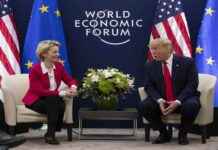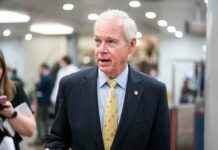China’s Consumer Inflation Takes a Negative Turn After 13 Months
China’s economic landscape experienced a significant shift in February as the national consumer price index (CPI) fell into negative territory for the first time in over a year. This unexpected decline was driven by a drop in food, tobacco, and alcohol prices, marking a stark contrast to the positive trajectory seen in recent months.
According to data published by China’s National Bureau of Statistics, the CPI decreased by 0.7% last month compared to the same period the previous year. This downturn comes after a modest 0.5% year-on-year increase in January, catching many economists off guard. Initial estimates had anticipated a more moderate contraction of 0.5%, highlighting the unpredictability of current market conditions.
In addition to the annual decline, China’s CPI also saw a 0.2% decrease on a monthly basis in February, contrasting with the 0.7% uptick observed in January. These fluctuations underscore the challenges facing the country’s economy and raise questions about the effectiveness of Beijing’s stimulus efforts in driving sustained growth.
Implications of Negative Inflation
The shift to negative consumer inflation has raised concerns among investors and policymakers alike, as it signals potential weaknesses in domestic demand and overall economic health. With China recently unveiling a conservative GDP target of “around 5%” for 2025, the pressure to stimulate growth and stabilize the market has intensified.
Experts warn that achieving a growth rate of 5% this year may prove to be a daunting task, especially given the backdrop of subdued consumer spending and escalating trade tensions with the United States. The ongoing trade dispute, coupled with uncertainties surrounding global economic conditions, adds another layer of complexity to China’s economic outlook.
Revised Inflation Targets and Policy Adjustments
Amid the shifting economic landscape, Beijing has recalibrated its inflation targets and policy approach to address the current challenges. The decision to revise down the annual consumer price inflation target to “around 2%”—the lowest in more than two decades—reflects a cautious stance aimed at managing inflationary pressures.
The new inflation goal is positioned more as a ceiling than a definitive target, signaling a flexible approach to monetary policy and economic management. By setting a lower inflation threshold, policymakers aim to strike a delicate balance between supporting growth and containing price pressures, a delicate dance that requires nimble adjustments in response to changing market dynamics.
As China navigates the complexities of economic recovery and policy recalibration, the road ahead remains uncertain. The interplay of domestic and global factors will continue to shape the country’s economic trajectory, underscoring the need for adaptive strategies and prudent decision-making in the months to come.
— CNBC’s Evelyn Cheng & Anniek Bao contributed to this report.

















